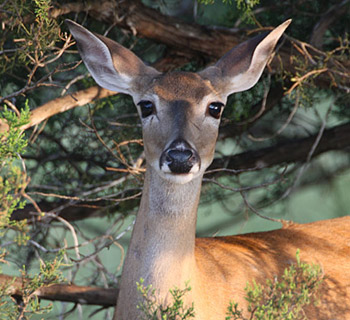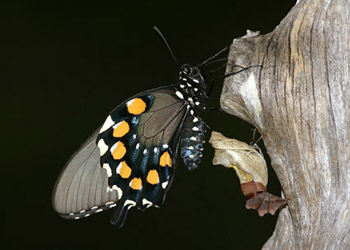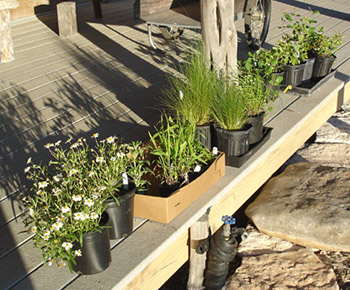Archive for 'Food' Category
Hurricane Dean in Mexico, very cool, light shower and breezy. River very high and fast.
- Continued to refresh hummingbird feeder
- Fewer feeders presented
- Saw Ruby throat
- Mostly Black-chinned (green back)
- Many animal tracks and dragonflies at pond
- Collected mulch from Oak Wilt clearing to beef up driveway behind house
- Treated poison ivy on steps to river with horticultural vinegar
- Added water to natural pond in bobcat draw with 2 hoses strung from well water faucet
Posted in
2007 Journal, Census, Habitat, Food, Water
Chiggers!
Caretaker's note: This is a sign that the fire ants are less numerous than before and under control. Have not seen (or felt) chigger bites for 10 years before.
Continued feeding hummingbirds
Caretaker's note: The large 15 ounce feeders do better in the deep shade. Also experimented with city chlorinated water instead of rain water and the feeding solution seemed to last longer.
Saw:
Caretaker's note: Cowbirds are a predatory species on songbirds previously discussed in a 2005 Journal entry. A few have been seen in the spring during nesting season but efforts to find them and shoot them failed. This 2007 photo shows the young cowbirds being introduced to a water source by their adoptive parents, the cardinals. Cowbirds are so named because they tend to be found near cattle operations. Historically, they adapted their predatory behavior to follow buffalo as they roamed to new grazing areas.
- Fox
- Raccoon
- Rock squirrel
- Squirrel
- Deer

Posted in
2007 Journal, Census, Predator, Food, Water
- Bridge was flooded, but passable
- After 6 days, all hummingbird feeders were dry
- Saw young Rock squirrel
Posted in
2007 Journal, Census, Food
Continued feeding hummingbirds. (Feeders need refreshing every 4 days in hot weather, it is especially needed when the color of the sugar mixture appears cloudy instead of clear.)
Emergent Pipevine Swallowtail butterfly seen on post at gate entrance

- Removed Johnson grass throughout yard area
- Transplanted Blackfoot daisy
- Cleared trail to river which was overgrown due to increased rains
- Removed ragweed from river bottom
Posted in
2007 Journal, Census, Habitat, Food
New spring plantings:

- 6 Blackfoot daisy
- 2 Sideoats gramma grass
- 1 Crossvine
- 1 Coral honeysuckle
- 2 Mealy blue sage
- 4 Mexican feather grass
- 4 Boneset
- 2 Coreopsis
Caretaker's note: Plant diversity is desirable to encourage a variety of animal species. Selections are made that are native to Texas. Plants that are deer resistant are left uncaged. Most flowering plants need to be caged to protect from deer browsing. One exception is the Blackfoot daisy (seen in the foreground of this photo).
In harsh conditions, no plants are safe from deer browse. Typically, deer avoid strong smelling leaves, like Rosemary, Lavender and Lantana.
Native plants require frequent waterings until they are well established in their new location, then they should do fine on natural rainfall.

Caretaker's note: Many frogs and tadpoles are found in the pond near the house. This juvenile has grown its legs, but the coloring on the back of its head is still in its youth phase.
Posted in
2007 Journal, Census, Habitat, Food
<< Previous Entries




